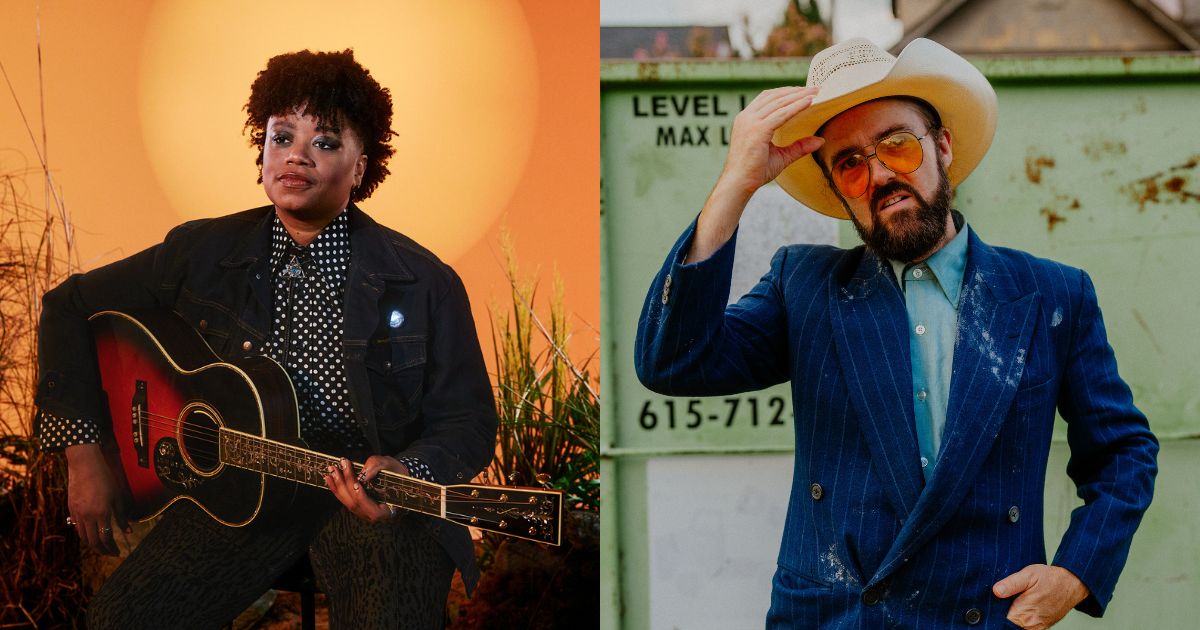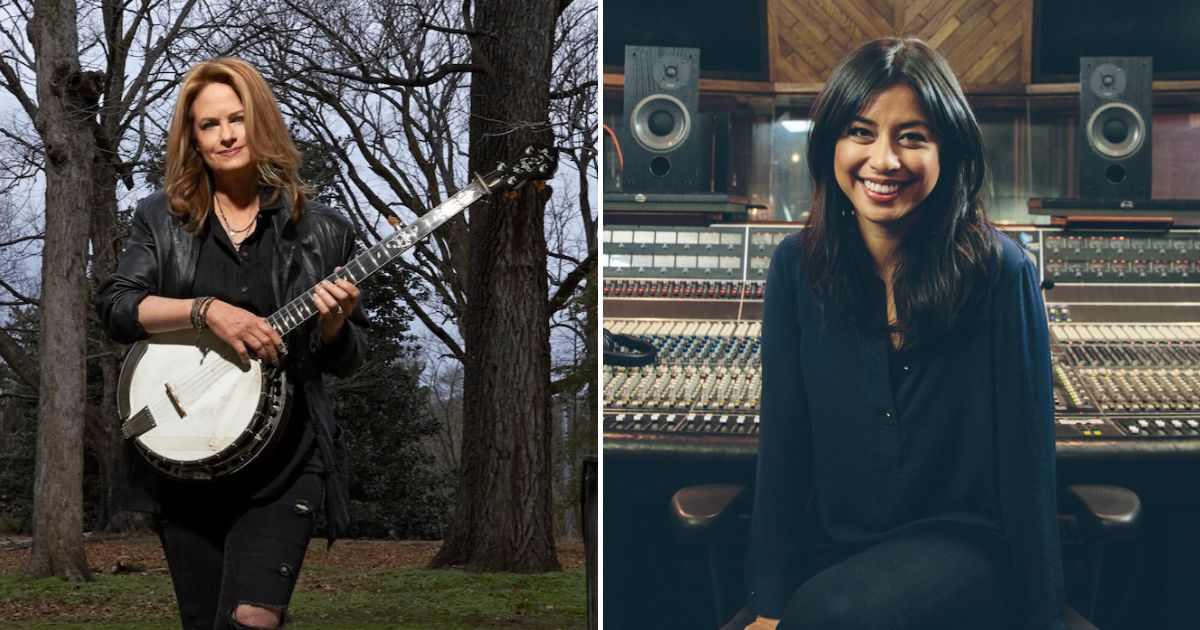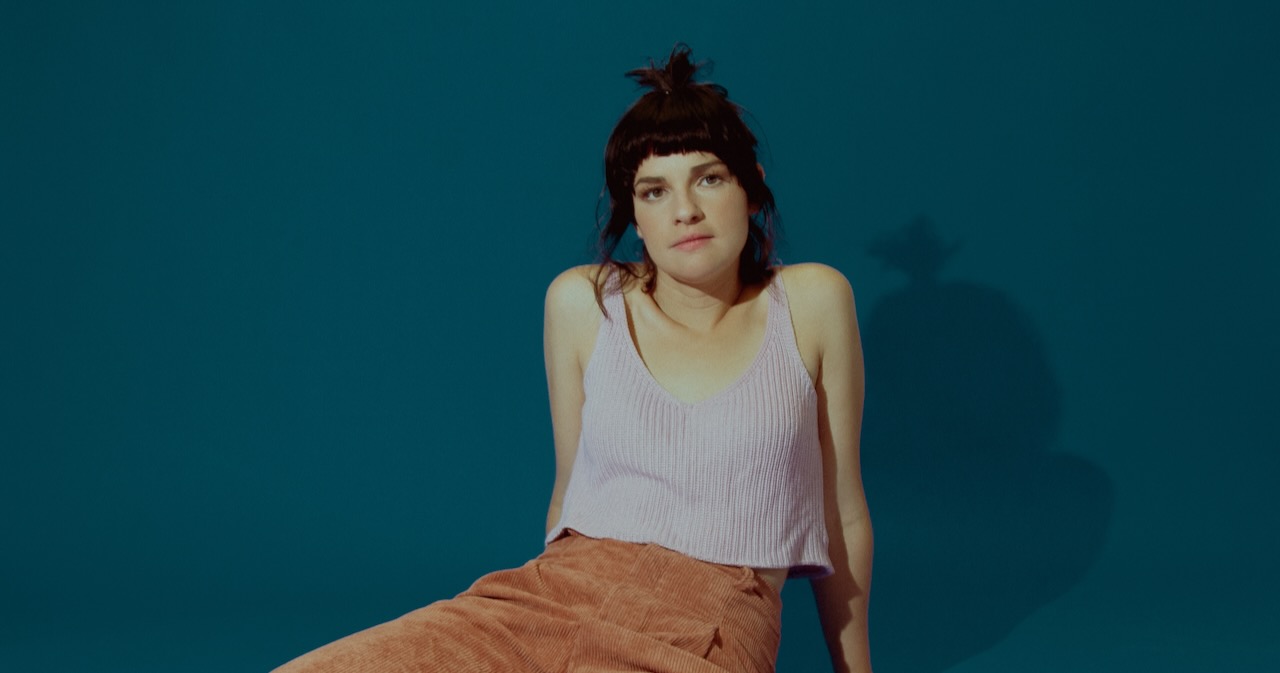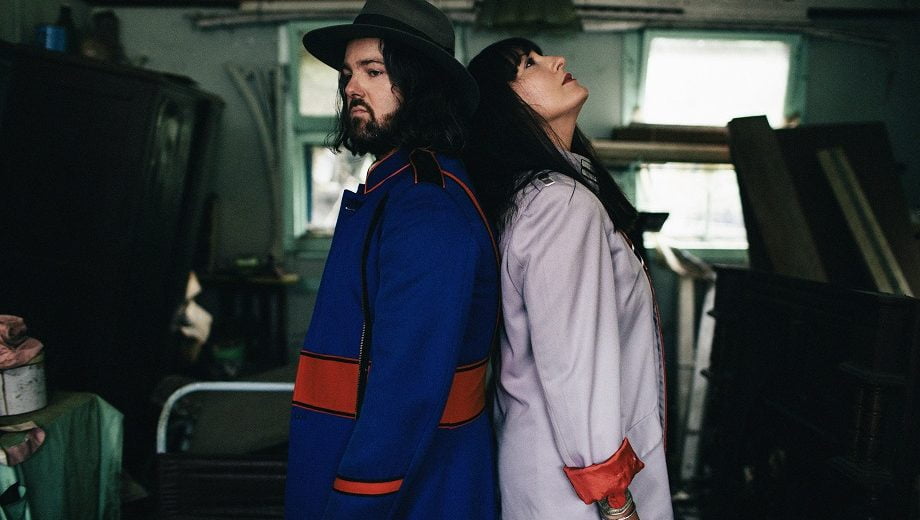The last Friday of July came up fast, didn’t it? To close out the month, we’ve got another excellent round up of bluegrass, country, and Americana premieres that you won’t want to miss.
In the bluegrass department, we’ve got a brand new track from bluegrass hitmaker Ashby Frank featuring his labelmate Jaelee Roberts, Dallas Moore gives an intimate solo performance of “Up On That Mountain,” and we close our DelFest Sessions series with IBMA Award nominees Sister Sadie.
Coming from Americana and country camps, don’t miss a hilarious video from Jordie Lane paying homage to an East Nashville favorite, Nashville Biscuit House, Cole Gallagher shares a track that dropped earlier this week entitled “Traveling Man’s Blues,” and Mike Montrey Band serve up a quintessentially country love song, “Holdin’ on to Nothin’.”
Plus, Amythyst Kiah has just announced her upcoming Butch Walker-produced album, Still + Bright, with a lead single that features S.G. Goodman entitled, “Play God and Destroy the World.”
It’s all right here on BGS and you know what we think – You Gotta Hear This!
Ashby Frank, “God Gave Me Horses”
Artist: Ashby Frank
Hometown: Nashville, Tennessee
Song: “God Gave Me Horses”
Release Date: July 26, 2024
Label: Mountain Home Music Company
In Their Words: “‘God Gave Me Horses’ was co-written by one of my favorite Nashville songwriters, the great Connie Harrington, along with Leigh Nash, who is well-known for her solo recording career as well as being the lead singer for the band Sixpence None The Richer. A mutual friend of mine and Leigh’s played me her original cut of this song when she released it and I was blown away by the lyrics and instantly knew I wanted to record it with a rootsy bluegrass treatment. There are a lot of classic ‘prison songs’ that are considered bluegrass standards that talk about despair, hopelessness, and regret, but this composition has a more contemporary and positive message that I think will resonate with listeners of every generation. I’m so pleased with how this track turned out, and especially grateful for my great friend and Mountain Home Music labelmate Jaelee Roberts for lending her voice to this track. I can’t wait for everyone to hear it.” – Ashby Frank
Track Credits:
Ashby Frank – Mandolin, vocals
Seth Taylor – Acoustic guitar
Travis Anderson – Bass
Matt Menefee – Banjo
Jaelee Roberts – Harmony vocals
Cole Gallagher, “Traveling Man’s Blues”
Artist: Cole Gallagher
Hometown: Nashville, Tennessee
Song: “Traveling Man’s Blues”
Release Date: July 25, 2024
Label: Raggy & Balls
In Their Words: “In order to really understand what ‘Traveling Man’s Blues’ is about, you’ve got to understand that I spent almost two years on the road with my father a few years back. Earlier this year, I moved from LA to Nashville, so when I got back out on the road to shoot a video for this song, I had nothing but nostalgia shooting through every frame of this video. I wasn’t much older at the time than I was driving across with my dad. But it was enough time to have forgotten how beautiful the sun looks setting in Arizona or an amazing bright blue sky over the Cadillac Ranch in Amarillo, Texas. I felt like I was both discovering and re-discovering myself at the same time.” – Cole Gallagher
Track Credits:
Barry Billings – Guitar
Chad Gamble – Drums
Cole Gallagher – Guitar, vocals
Jimbo Hart – Bass
Jon Eldridge – Keys
Sadler Vaden – Guitar
Video Credits: Shot by Cole Gallagher.
Produced by Cole Gallagher.
Edited by Abe Barrington.
Amythyst Kiah, “Play God and Destroy the World” (Featuring S.G. Goodman)
Artist: Amythyst Kiah
Hometown: East Brainerd, Tennessee
Song: “Play God and Destroy the World” (Featuring S.G. Goodman)
Album: Still + Bright
Release Date: July 26, 2024 (single); October 25, 2024 (album)
Label: Rounder Records
In Their Words: “This song is about coming of age as a misfit in suburbia. At home, I was encouraged to be curious to and express myself, and pursue whatever interests I wanted to regardless of gender, race, sexuality, or beliefs. However, I was not always met with this same attitude out in the community I lived in and it was frustrating to feel like I couldn’t really be myself. Being a naive kid, I would sometimes fantasize about being all-powerful and changing things the way I saw fit, but it is not up to me, or anyone, to tell everyone else how to live their life. We are all from this green and blue dot in space and will return to it all the same. There’s enough suffering in life as it is, why make it worse by policing each other’s way of life?” – Amythyst Kiah
Track Credits: Written by Amythyst Kiah, Sadler Vaden.
Produced by Butch Walker.
Amythyst Kiah – Vocals, background vocals, acoustic guitar, electric guitar
S.G. Goodman – Vocals, background vocals
Butch Walker – Bass guitar
Ellen Angelico – Electric guitar, baritone guitar, mandolin
Matty Alger – Drums, percussion
Jordie Lane, “Biscuit House”
Artist: Jordie Lane
Hometown: Thornbury, Australia (Based in Nashville, Tennessee)
Song: “Biscuit House”
Album: Tropical Depression
Release Date: July 25, 2024 (single); August 16, 2024 (album)
Label: Blood Thinner Records, under exclusive license to ABC Music/The Orchard
In Their Words: “As with so many of my songs, I started out writing ‘Biscuit House’ with co-writer Clare ‘Lollies’ Reynolds about something external… somebody else. It’s a way to trick yourself into feeling less vulnerable. And it’s a way to observe the character in a more realistic and less biased way. But long story short, ‘Biscuit House’ is about imposter syndrome. Something so many people feel at some point in their lives, but especially creatives in the arts. And so the idea to dress up as this weatherman character, Tom Willing, to play in the video felt very fitting to explore being an imposter in a literal sense and get completely ridiculous and over the top.” – Jordie Lane
Track Credits:
Jon Radford –Drums, percussion
Jon Estes – Bass, pedal steel, keys
Jeremy Fetzer – Electric guitar
Clare ‘Lollies’ Reynolds – Backing vocals
Jordie Lane – Acoustic, tenor, piano, vocals
Video Credits: Directed by Mackenzie Brassfield & Jordie Lane.
Camera, editing & color by Mackenzie Brassfield.
Assistant Director of Photography, Mikey Haydon.
Mike Montrey Band, “Holdin’ on to Nothin'”
Artist: Mike Montrey Band
Hometown: Spotswood, New Jersey
Song: “Holdin’ on to Nothin'”
Album: Love, Time & Mortality
Release Date: August 2, 2024
In Their Words:“‘Holdin’ on to Nothin’ is about the process of love. It seems, more often than not, the story of love in songs is about the beautiful beginning, the tragic end, or the celebration of sustained love. However, it is often what we choose to hold on to or let go of in the most critical moments of a relationship that allows us to move forward or move on. Sometimes we just hold on to hope and sometimes we’re holdin’ on to nothin’.” – Mike Montrey
Dallas Moore, “Up On That Mountain”
Artist: Dallas Moore
Hometown: San Antonio, Texas
Song: “Up On That Mountain”
Album: Gems & Jams
Release Date: August 9, 2024
Label: Sol Records
In Their Words: “I’ve always loved bluegrass and really cut my teeth and learned guitar sitting in on countless bluegrass jam sessions back in Kentucky and southern Ohio when I was kid first starting out. My mama Madgelee played mountain dulcimer and she turned me on to a lot of bluegrass, Appalachian, and gospel music. Jimmy Martin, The Carter Family, John Hartford, The Osborne Brothers, and Flatt & Scruggs were some of my favorites to jam on and definitely influenced my style of playing and songwriting.
“‘Up On That Mountain’ is a song that I had written several years ago and that I have always called ‘a little bit of heathen preachin’.’ I even had a version of it that was recorded live in the Bullitt county jail but it’s been out of print for a while now. This song has been a staple of my live shows for many years and I’m always excited and proud that my 7 year-old daughter Victory Lee Moore joins us on stage for this one. I had a lot of fun with this solo acoustic arrangement and it felt like a perfect fit for the closing of this Gems & Jams album. Wherever I am this song always takes me back home.” – Dallas Moore
Track Credits:
Dallas Moore – Vocals, guitar
Brian DeBruler – Producer, engineer
DelFest Sessions: Sister Sadie
We are so excited to unveil the final installment of our DelFest Sessions, featuring Grammy-nominated bluegrass supergroup Sister Sadie. Over the course of the Memorial Day festival in Cumberland, Maryland, BGS contributors and videographers I Know We Should shot a half dozen superlative live performances on the gorgeous banks of the Potomac River. From festival hosts the Travelin’ McCourys, Big Richard, and Wood Belly to East Nash Grass, Mountain Grass Unit, and now the Sadies, each edition of our DelFest Sessions has been an audio swatch of the incredible national string band scene we all adore.
With a raucous “WOO!” shouted to the festival-goers floating by in their inner tubes and kayaks on the river, Sister Sadie stepped up to the mics to deliver two gentle, burning, emotive tracks pulled from their critically-acclaimed album, No Fear, which was released earlier this year. The first, “Blue As My Broken Heart,” was written by Dani Flowers – who sings lead on the number – with co-writers Victoria Banks and Rachel Proctor. Evocative imagery and detailed text painting here feel more than appropriate for the setting, in the verdant foothills of Appalachia on the cusp of spring and summer. You can almost feel the blue sky above and you can certainly grasp, immediately, why this group is up for eight IBMA Awards this year – including Entertainer of the Year and Vocal Group of the Year…
Photo Credit: Amythyst Kiah by Kevin & King; Jordie Lane as “Tom Willing” by Mackenzie Brassfield.



